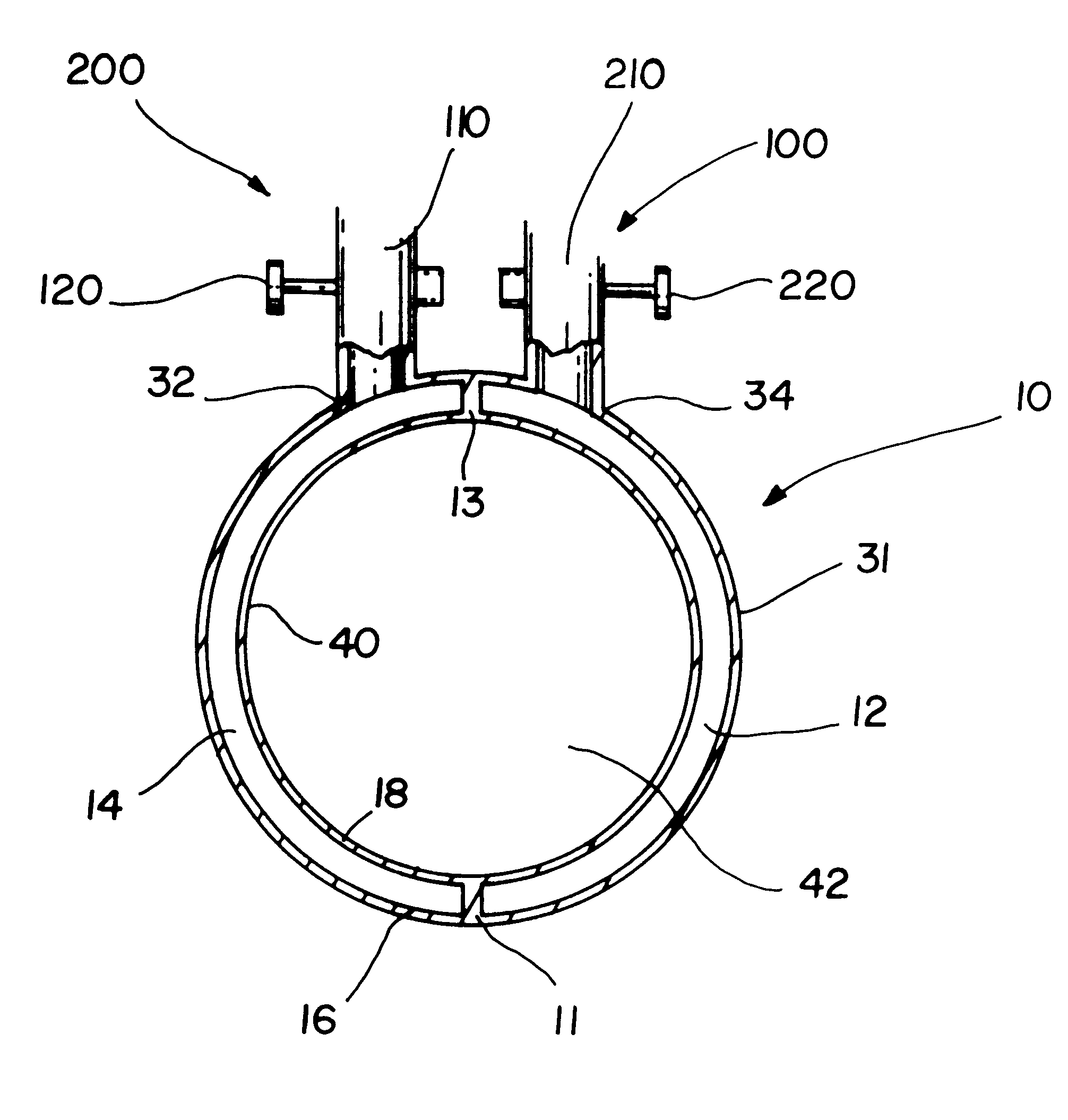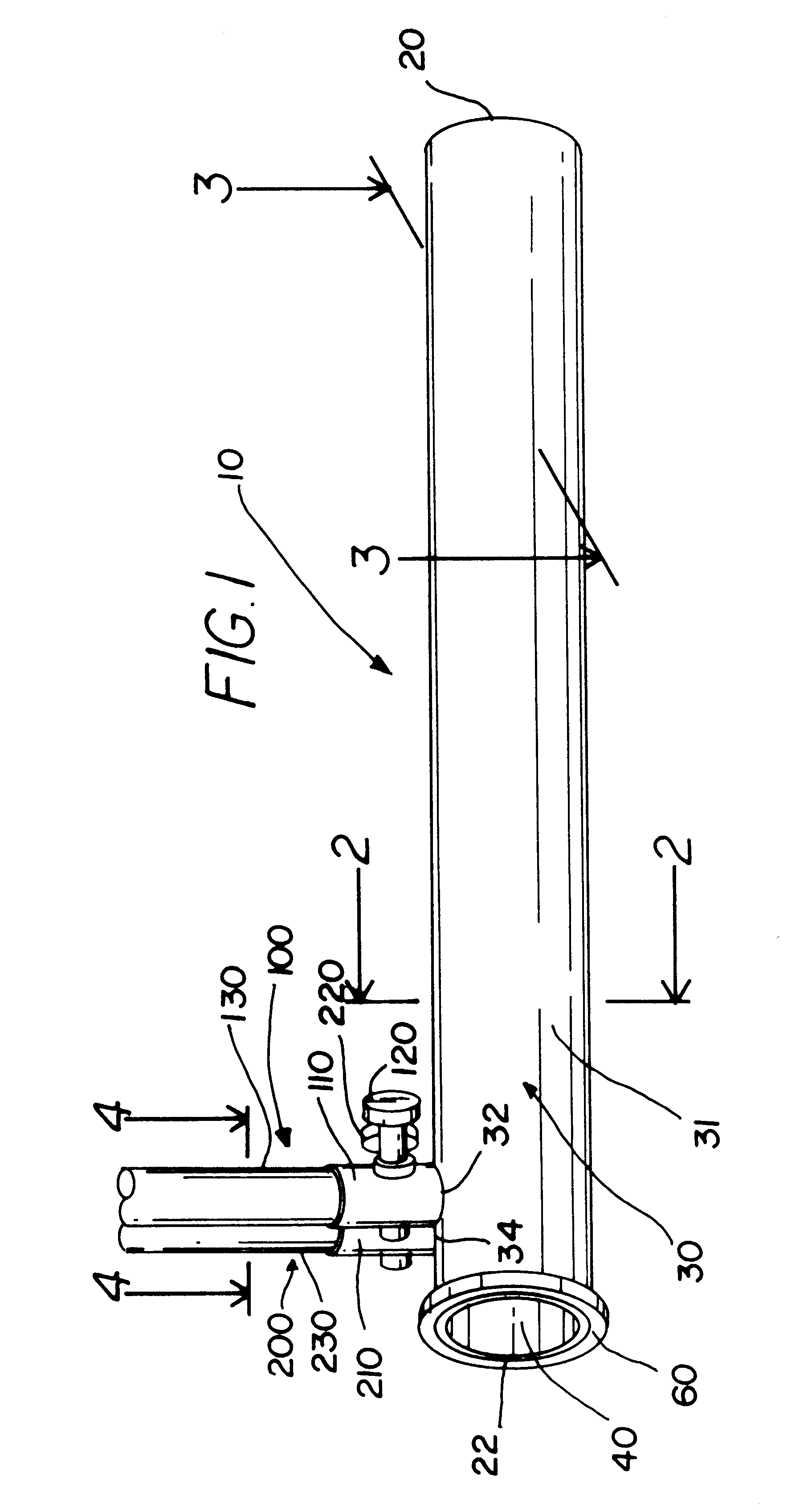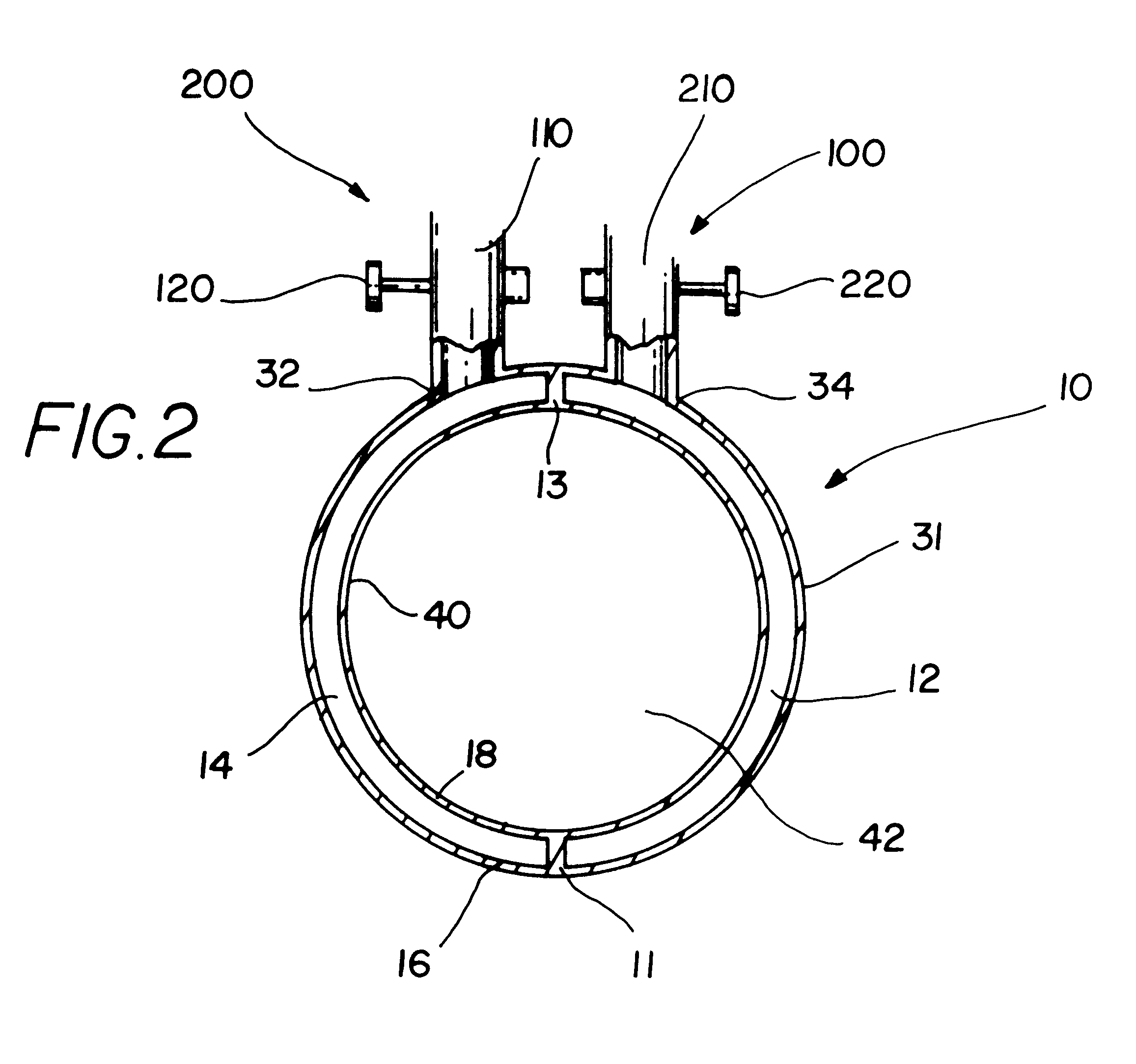Automated laparoscopic lens cleaner
a technology of automatic cleaning and laparoscopic lens, which is applied in the field of apparatus and methods for cleaning and protecting the objective lens of a laparoscope, endoscope, or coeloscope, and can solve the problems of blood and other body fluids attaching to the lens, obscuring vision, and often soiled objective lens of the scop
- Summary
- Abstract
- Description
- Claims
- Application Information
AI Technical Summary
Problems solved by technology
Method used
Image
Examples
Embodiment Construction
In FIG. 1, cleansing apparatus 10 is shown from a side perspective. Cleansing apparatus 10 has sheath 30, irrigation port 100 and suction port 200. Sheath 30 has patient end 20 and operator end 22. Operator end 22 of sheath 30 has ring 60 for tightening and sealing scope 300 (not shown in FIG. 1, see FIG. 3). Sheath 30 has outer surface 31 and inner surface 40. Irrigation port 100 has irrigation tubing 130, irrigation connector 110 and irrigation valve 120. Suction port 200 has suction tubing 230, suction connector 210 and suction valve 220. In FIG. 1, irrigation valve 120 and suction valve 220 are facing forward. The position of irrigation valve 120 and suction valve 220 can vary to meet the user's needs for comfort and accessibility. In the preferred embodiment, cleansing apparatus 10 is a disposable, one time use semi-automatic laparoscopic lens cleaning device fabricated from medical grade plastic. However, a laparoscope or other type of scope could be made in one piece employin...
PUM
 Login to View More
Login to View More Abstract
Description
Claims
Application Information
 Login to View More
Login to View More - R&D
- Intellectual Property
- Life Sciences
- Materials
- Tech Scout
- Unparalleled Data Quality
- Higher Quality Content
- 60% Fewer Hallucinations
Browse by: Latest US Patents, China's latest patents, Technical Efficacy Thesaurus, Application Domain, Technology Topic, Popular Technical Reports.
© 2025 PatSnap. All rights reserved.Legal|Privacy policy|Modern Slavery Act Transparency Statement|Sitemap|About US| Contact US: help@patsnap.com



